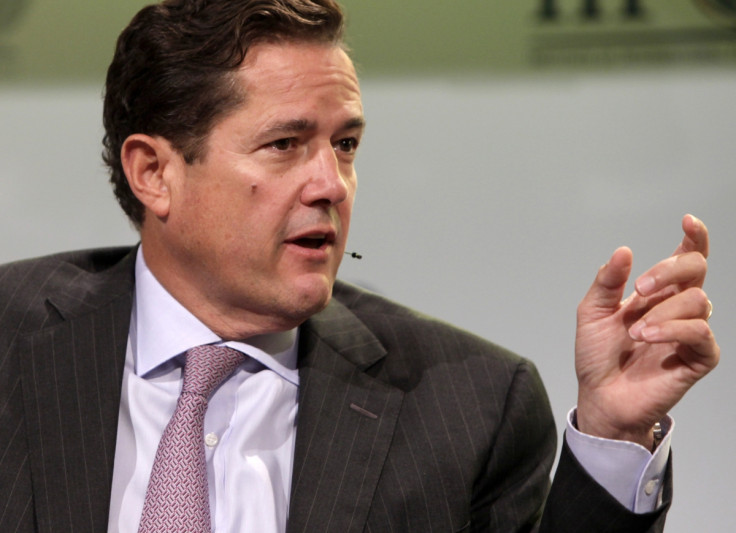Barclays in the dock – the price of constant revolution
Since the 2008 financial crisis Barclays has shed thousands of staff, axed leaders and changed direction – only to change back again.

Senior Barclays bankers may not have been surprised to wake up this morning to find the country's top criminal prosecutor had pressed charges against it – the bank has in perpetual revolution for almost a decade.
The Serious Fraud Office (SFO) has charged Barclays and four former executives, including former chief executive John Varley, with conspiracy to commit fraud relating to the lender's dealings with Qatar during its £11.8bn ($14.9bn) fundraising during the financial crisis.
The SFO said the charges relate to Barclays "capital raising arrangements" in Qatar "which took place in June and October 2008, and a $3bn loan facility made available to the State of Qatar acting through the Ministry of Economy and Finance in November 2008."
The deals came when the markets were boiling in the white heat of the 2008 financial crisis – Lehman Brothers had just crashed – but Varley and his team tapped investors from the royal family of Qatar for $6.1bn in two fundraisings that year.
The cash injection meant that Barclays was one of a select few big UK-listed banks to survive the period without having to turn to the taxpayer for help.
Varley and his top team may well have thought their swift action had saved the 327-year old bank. But instead it has led to almost a decade of chief executive decapitations and thousands of job cuts as the bank constantly reinvented itself.
As a result of these fundraisings the bank currently faces a $1bn lawsuit for unpaid fees from financier Amanda Staveley who put part of Middle Eastern investment together, and a wrongful dismissal claim from Richard Boath, the bank's co-head of global finance in Europe and the Middle East at the time.
Investment banker
Watchdog the Financial Conduct Authority (FCA) said in 2013 it would fine Barclays for improper disclosure to the market over the 2008 fundraisings, but suspended its case because of the SFO probe. Earlier this year it reopened its enquiry. The FCA today added it "welcomed a fair and transparent hearing on the basis of the charges set out today by the SFO".

But the fallout from the Qatar deal has kept the bank off balance for the best part of a decade.
When American investment banker Bob Diamond succeeded Varley in 2011 Barclays believed its future lay in high-end corporate banking, inhabited by its biggest US rivals such as Goldman Sachs and JPMorgan.
In September 2008 Diamond, who was then the bank's investment head, moved quickly to buy the US investment banking assets of collapsed Lehman Brothers for $1.75bn, adding 10,000 staff and almost doubling the group's investment banking size.
Swaggering style
As leader Diamond, along with his co-heads of the investment bank, Rich Ricci and Jerry del Missier, ran a swaggering play-hard-work-hard culture that always pushed hard to get deals done.
But Diamond's high-flying career came crashing down in 2012 when he was forced by regulators to quit Barclays in the wake of the Libor rigging scandal.
The then Chancellor George Osborne described Diamond's resignation as "the right decision for Barclays – and for the country".
Antony Jenkins took the helm of the bank next in September 2012. He was from the retailing banking side of the business, viewed as much less risky as lending here is based on cash held in customer deposit accounts.

Jenkins time at the top of the bank was defined by a campaign to improve behaviour in Barclays in the wake of the Libor manipulation scandal, but he was axed in July 2015 by new chairman John McFarlane, who wanted a chief executive who would grow profits more quickly.
The bank brought in former JPMorgan investment banker Jes Staley in December 2015, and he set about selling off non-core units and reviving the investment bank, which previously had been an engine of growth for the business.
Job cuts
In June is said it planned to sell-off most of its African business for £2.2bn as the group narrowed its focus. Earlier in February Barclays announced its annual profit almost trebled to £3.2bn, driven by strong trading at its credit card business and lower litigation and payment protection insurance charges.
The bank has cut around 19,000 jobs around the world since 2014 as part of a simplification of the firm's operations and branch closures.
Shares in Barclays in were only 1.1p lower at 205.7p in afternoon trading, following the announcement from the country's top prosecutor.
But Hargreaves Lansdown senior analyst Laith Khalaf said: "The muted reaction in the share price highlights the fact that the SFO action was largely priced in, and more widely reflects the 'misconduct discount' which applies to the banking sector.
"Litigation, fines and compensation payments have sadly become part and parcel of the banking world, and while many of the alleged offences took place a long time ago, the costs and reputational damage are still very much a live issue."
© Copyright IBTimes 2025. All rights reserved.






















